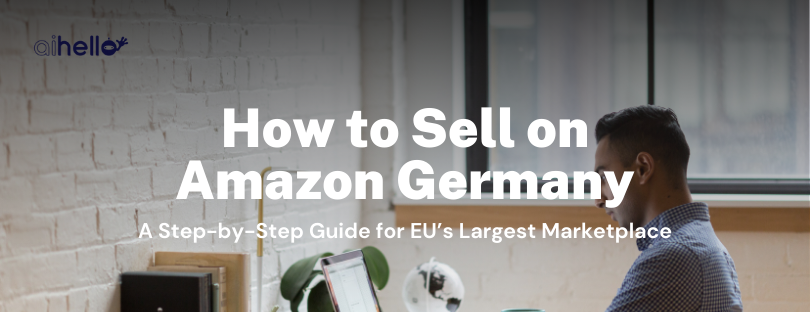Amazon Germany is the largest EU and third biggest global marketplace, after the US and UK. If you’re just starting out or already selling on Amazon and looking for the next step to grow your business, launching on Amazon Germany (Amazon.de) is one of the most profitable moves you can make.
But it’s not as simple as listing your product and expecting orders to come in. To succeed on Amazon.de, you need to handle regulatory requirements, choose the right fulfillment setup, and make sure your listings are optimized for German buyers.
This guide walks you through exactly what to do, and if you follow it from Step 1 to Step 7, you’ll be ready to launch your products legally and profitably on Amazon Germany with minimal hassle.
Step 1: Evaluate Demand in the German Market
Before registering for taxes or moving inventory, you first need to make sure your product is a good fit for the German market. This step can save you thousands in wasted setup costs if demand simply isn’t there.
To see if there’s a growth opportunity for your product in Amazon Germany, install the Helium 10 X-Ray Chrome extension. It’ll allow you to analyze your competitors’ performance and get detailed sales data.
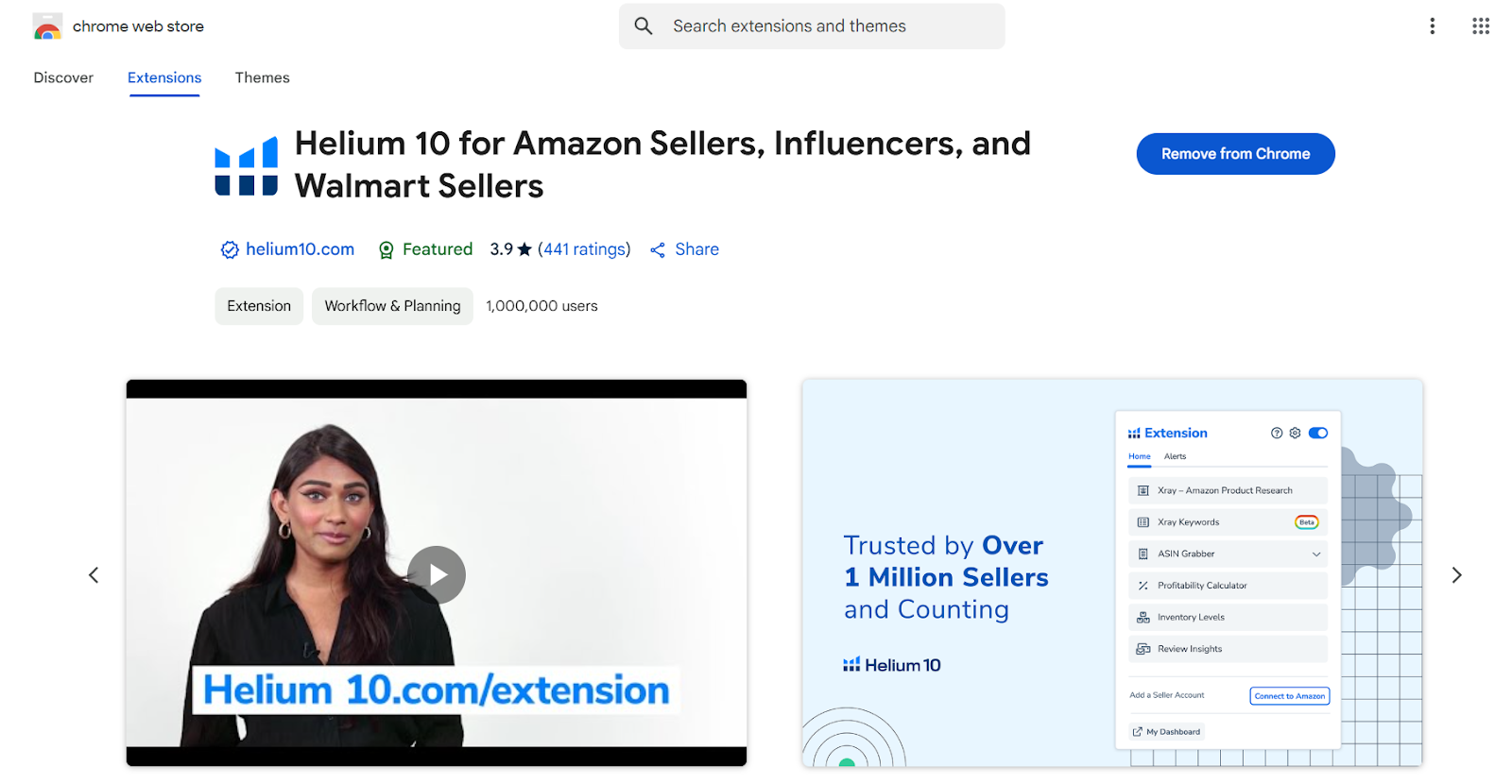
Next, go to Amazon.de and enter your product’s main keyword (e.g., “water resistant backpack”) in the search bar. You will see a list of products already selling in your category.
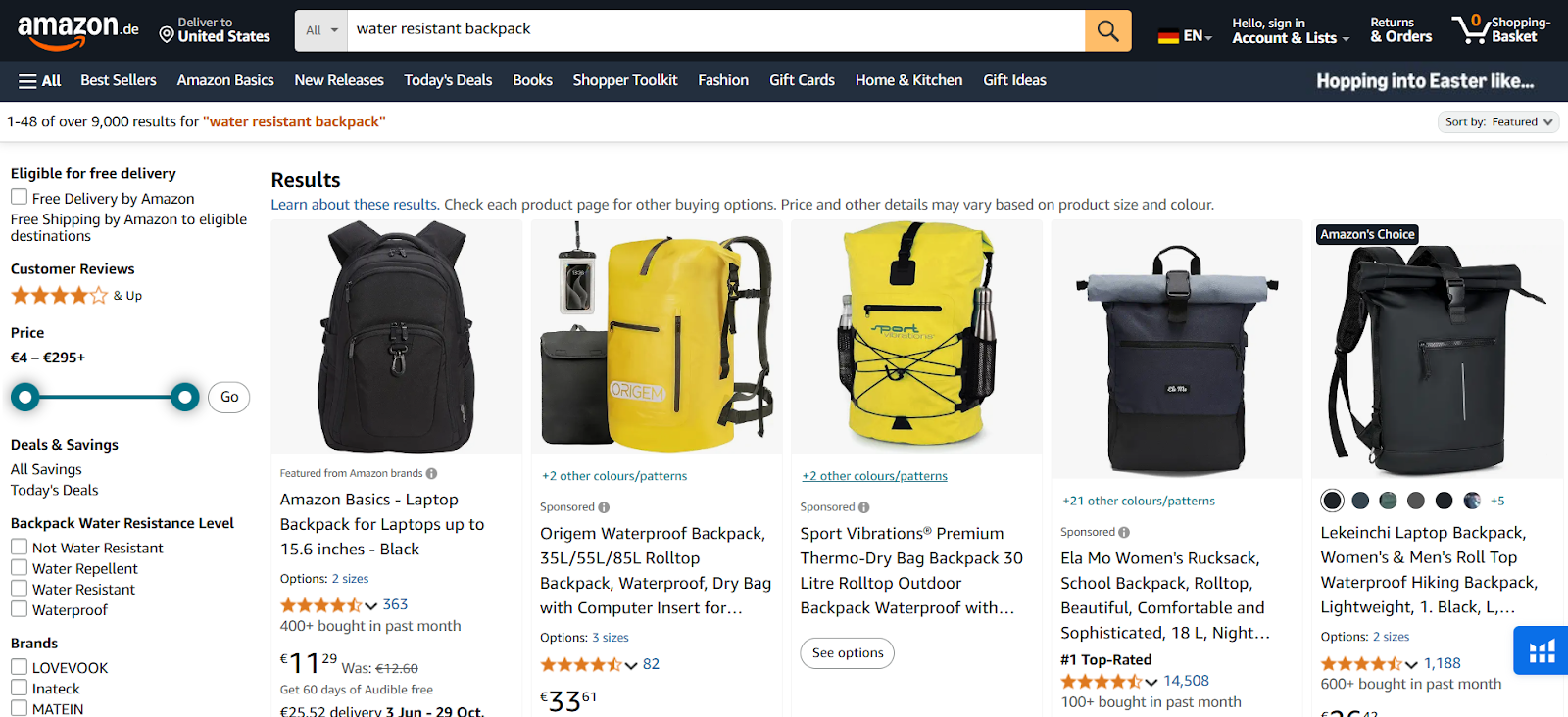
Identify 5-10 listings with lots of reviews and high rankings and lower-performing listings that are most similar to yours. Then look at how many units each competitor is selling per month.
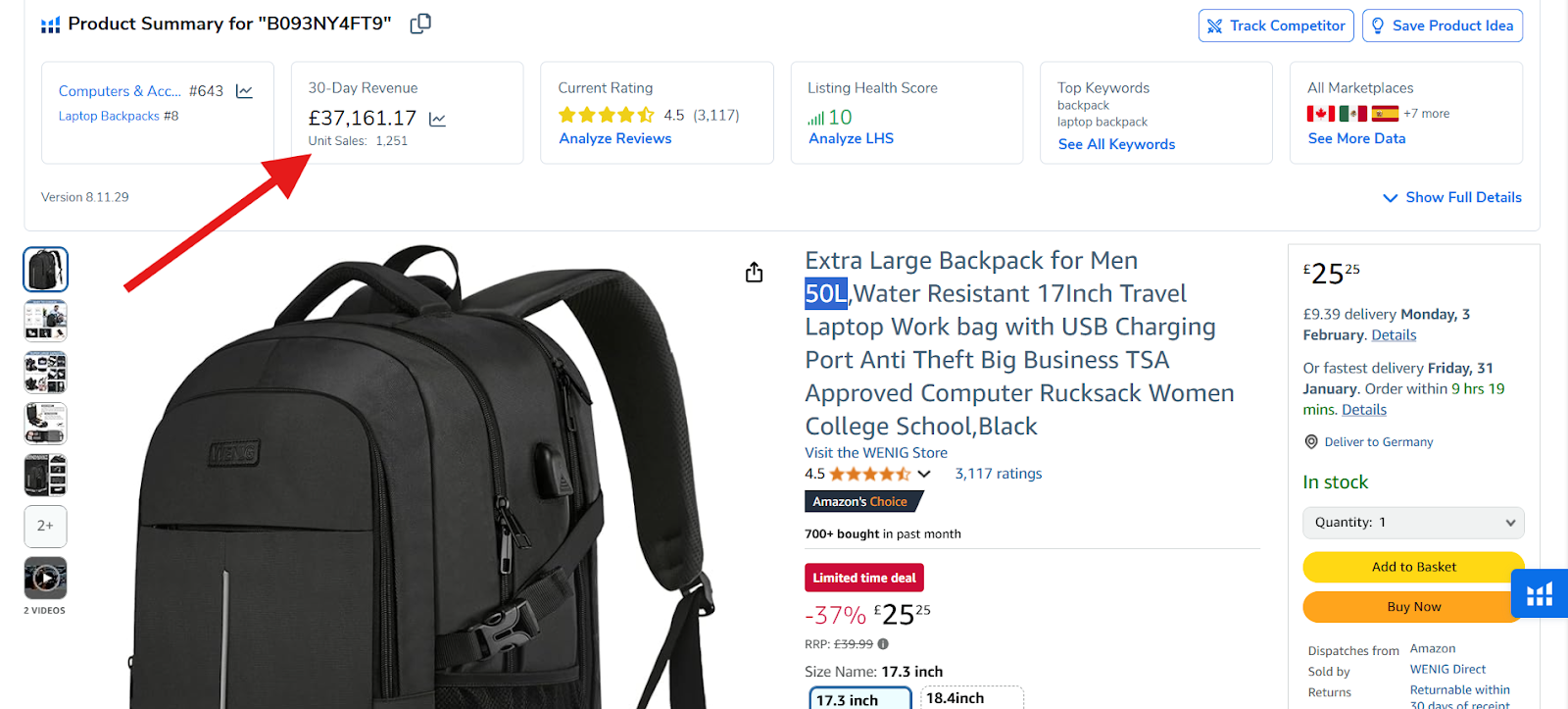
If competitors in your category sell between 500-1,000 units per month, this indicates strong demand. However, if most listings sell fewer than 100 units monthly, it might not be worth pursuing.
Evaluating demand with precise data ensures that you’re not entering the Amazon Germany marketplace blindly but are setting yourself up for success by selling a product that German customers are actively searching for and buying.
Step 2: Register for German VAT
Once you’ve confirmed there’s demand for your product in Germany, the next step is getting legally set up to sell.
For non-EU sellers, VAT registration is mandatory if you plan to store inventory in Germany (for example, using Amazon FBA in Germany).
If you’re an EU-based seller, VAT is also required if you store inventory in Germany. However, if you’re shipping into Germany from another EU country without storing products locally, you can sell under the EU’s €10,000 cross-border threshold. Once your total EU-wide cross-border sales pass that amount, VAT registration becomes mandatory.
Here’s how to get your VAT ID:
- Apply directly through the German Federal Central Tax Office (Bundeszentralamt für Steuern), or
- Use a VAT service provider to simplify the process. Some popular options include: hellotax, Taxdoo, AVASK, and SimplyVAT.
These services typically handle VAT registration, submit your monthly or quarterly filings, and help you stay compliant with German tax laws.
What you’ll need:
- Proof of business registration
- Valid tax ID from your home country
- Proof of business address
- Authorized representative (can be handled by the tax service)
- German bank account (not always required)
Note: VAT registration usually takes 3 to 6 weeks, so it’s best to begin the process early. Additionally, without a German VAT ID, Amazon can block your listings or withhold your payouts under German law.
Step 3: Get EPR Compliant (Packaging and WEEE Registration)
To sell on Amazon Germany, you must comply with EPR (Extended Producer Responsibility) laws. These rules require sellers to take responsibility for how their products impact the environment — especially when it comes to packaging and electronic waste.
If you don’t complete this step, Amazon is required by law to suspend your listings in Germany.
There are two main EPR requirements you should focus on:
1. Packaging Registration (LUCID ID)
If your product has any kind of packaging — even a simple box or plastic wrapping — you are legally required to register with the Zentrale Stelle Verpackungsregister and get a LUCID ID.
Here’s what to do:
- Go to verpackungsregister.org and register as a producer.
- You’ll receive a LUCID number, which must be added to your Amazon Seller Central account.
- Then, sign a license agreement with a dual system (e.g. Interseroh, Reclay, or Landbell). This is a paid service that ensures your packaging is recycled properly in Germany.
2. WEEE Registration (For Electronics)
If you sell any electronic or electrical devices, you must also register under the WEEE Directive (Waste Electrical and Electronic Equipment).
You’ll need to:
- Register with Germany’s EAR Foundation (Stiftung EAR)
- Get a producer number for your product category
- Provide a local authorized representative if you’re based outside Germany
Just like VAT, WEEE registration can be handled by service providers such as Lizenzero, Take-e-back, or ecoservice24.
Step 4: Set Up Your Amazon Germany Seller Account
Once your VAT and EPR compliance is underway, the next step is to set up your Amazon Germany seller account. This is where you’ll list your products, manage inventory, and handle ads and orders on Amazon.de.
How you set it up depends on whether you’re a new seller or you already sell on Amazon in another region.
If You’re a New Seller
Go to sell.amazon.de to start the registration process. You can sign up with your business email or use your existing Amazon customer account.
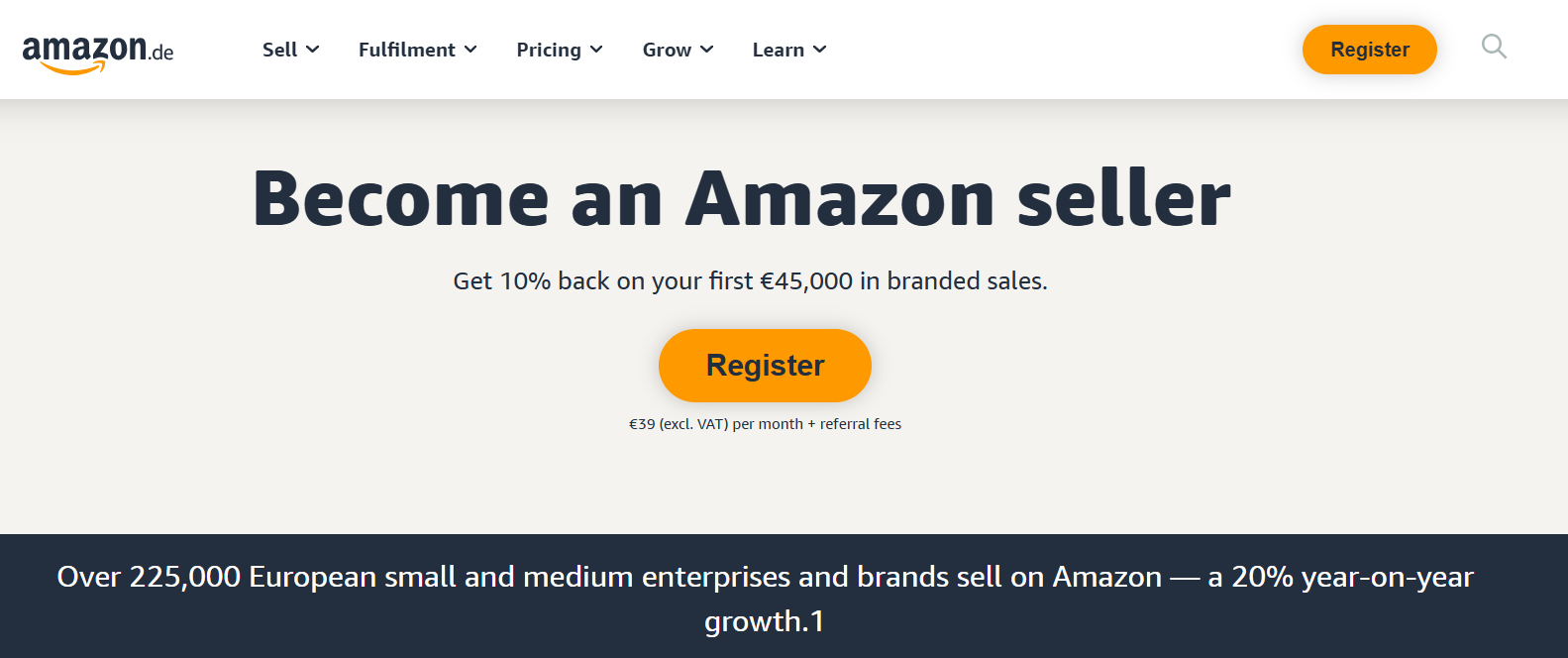
During the sign-up, Amazon will ask for:
- A valid business email address
- A chargeable credit card (international cards are accepted)
- A valid passport or national ID
- Business registration documents
- VAT number (can be added after the account is created)
- Phone number
- Bank account that can receive Euro payments (Wise or Payoneer works fine)
Once your account is created and verified, you’ll get access to the Seller Central dashboard for Germany.
If You’re an Existing Amazon Seller
You don’t need to create a new account. Amazon allows you to expand into Germany using your existing seller account.
Here’s how:
- Go to Seller Central and navigate to the Global Selling section.
- Scroll to the “Amazon Stores Worldwide” section, select “Link Accounts”, and follow the prompts to connect to your German marketplace.
This will open up a Germany sub-account inside your unified Seller Central. You can now start listing products, managing inventory, and launching ads on Amazon.de.
Step 5: Create and Upload Your Listings
With your German seller account active and VAT and EPR registrations in place, it’s time to create your product listings for Amazon.de.
This step is critical and even if you’re already selling on other Amazon marketplaces, you’ll need to upload and localize your listings specifically for Germany.
There are two ways to list your products on Amazon:
Option 1: List Products Manually
If you have a small catalog or are launching just a few products, you can add them manually in Seller Central:
- Log in to your Amazon Germany Seller Central
- Go to Inventory
- Choose whether you’re creating a new listing or selling an existing product
- Fill in the required fields: title, bullet points, description, images, keywords, and product details — all in German
- Set your price (VAT-inclusive), select your fulfillment method, and save the listing.
Option 2: Upload in Bulk
For larger catalogs, it’s more efficient to use Amazon’s inventory file templates:
- Go to Manage All Inventory > Spreadsheet

- Download blank template
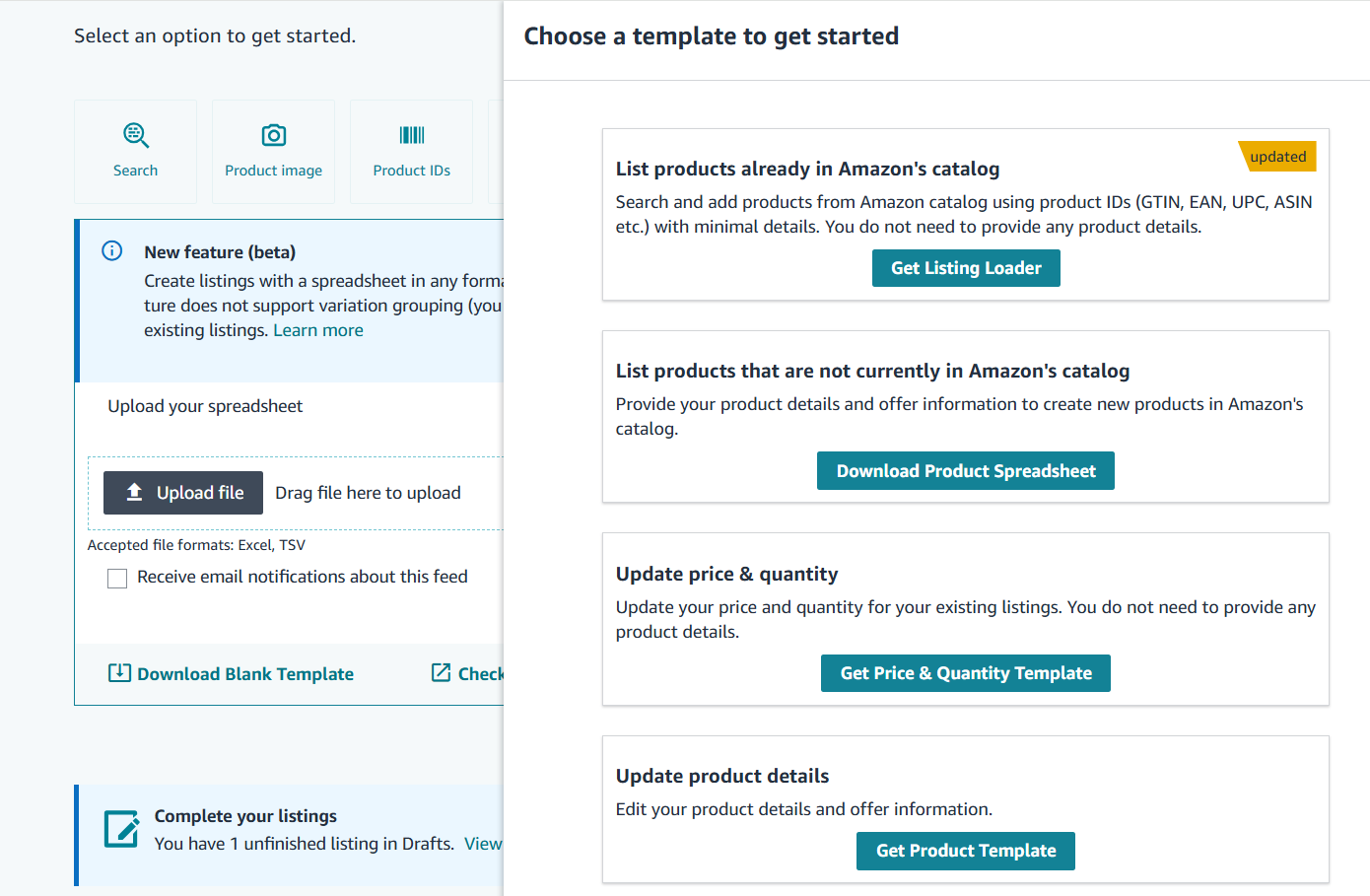
- Fill in the spreadsheet with your product data — including German-translated content and appropriate backend keywords
- Upload the file back to Seller Central
Make sure to double-check for errors in the upload summary. Listings won’t go live until they pass validation.
Important Listing Elements for Amazon.de
Whether you’re uploading manually or via file, every product listing must be optimized for the German market. Here’s what to include:
- Title: Clear, keyword-rich, and written in German. Follow Amazon.de’s title style guides for your category.
- Bullet Points: Use them to highlight your product’s main benefits and features. Avoid long sentences and vague claims.
- Product Description: Keep it informative, honest, and localized. Use line breaks for easy reading.
- Images: Include at least 6 high-quality images. If you use infographics or callouts, translate them to German.
- Search Terms: Fill in the backend keyword fields with relevant German keywords.
Note: If you’re already selling on Amazon.com or Amazon.co.uk, you can use Amazon’s Build International Listings (BIL) tool to copy your listings to Amazon.de. Just make sure to manually update the content in proper German so it performs well.
Step 6: Choose Your Fulfillment Method
With your Amazon Germany account set up, the next step is deciding how you’ll fulfill orders. This determines how quickly customers receive your products and how much control you’ll have over logistics, returns, and customer satisfaction.
There are four main fulfillment options available when selling on Amazon Germany:
Option 1: Fulfilled by Amazon (FBA Germany)
With this option, you send your inventory directly to Amazon’s fulfillment centers in Germany. Amazon handles everything from storage to delivery and customer service.
Benefits:
- Fast Prime delivery across Germany
- Higher Buy Box win rate
- Hands-off logistics
- Scale as orders grow without managing your own warehouse
Downsides:
- Requires upfront shipping and inventory planning
- Storage fees apply
- You must be VAT-registered and EPR-compliant before sending inventory
Option 2: European Fulfilment Network (EFN)
EFN allows you to store inventory in one EU country (like France or Poland) and ship to Germany from there. This is ideal for sellers who want to test the German market without committing to storing goods locally.
Benefits:
- Lower upfront costs
- Fewer VAT registrations at the beginning
- Easy cross-border entry
Downsides:
- Slower delivery times to German customers
- Higher per-order fees
- VAT registration in Germany still becomes necessary once you cross the €10,000 EU-wide sales threshold
Option 3: Pan-European FBA (Pan-EU)
This option gives Amazon permission to store and distribute your inventory across multiple EU countries based on demand. It’s ideal for sellers already performing well in several European markets.
Benefits:
- Faster delivery across Europe
- Best for Prime coverage
- Your products become available in multiple European marketplaces
Downsides:
- Requires VAT registration in all countries where your inventory is stored.
- More complex compliance
Option 4: Fulfilled by Merchant (FBM)
With FBM, you list your products on Amazon.de but handle storage, packing, shipping, and customer service yourself or through a third-party logistics provider.
Benefits:
- Allows personalized packaging and direct oversight of shipping.
- You can avoid Amazon’s FBA fees.
Downsides:
- FBM listings aren’t automatically eligible for Amazon Prime.
- You’re responsible for meeting Amazon’s strict shipping requirements.
- As order volumes increase, managing fulfillment in-house can become complex.
| Feature / Method | FBA Germany | EFN (European Fulfilment Network) | Pan-European FBA | FBM (Fulfilled by Merchant) |
| Inventory Storage Location | Germany | One EU country (e.g., France, Poland) | Multiple EU countries (Amazon decides) | Seller’s own warehouse or 3PL |
| Prime Eligibility | ✅ Yes | ✅ Yes | ✅ Yes | ❌ No (unless enrolled in SFP) |
| Buy Box Advantage | High | Moderate | High | Low |
| Delivery Speed (to Germany) | Fast (1–2 days) | Slower (2–5 days) | Fast (based on customer location) | Varies (depends on your carrier/setup) |
| VAT Registration Required | ✅ Yes (Germany) | Yes if sales > €10,000/year into Germany | ✅ Yes (in all countries where inventory is stored) | ✅ Yes (if storing or selling in Germany) |
| EPR Compliance Required | ✅ Yes | ✅ Yes | ✅ Yes | ✅ Yes |
| Upfront Costs | Medium (inbound shipping to DE + FBA fees) | Low | High (multi-country prep, logistics) | Low (no storage fees, but you handle shipping) |
| Logistics | Amazon | Amazon | Amazon | You / Your 3PL |
| Best For | Sellers launching and scaling in Germany | Sellers testing the German market | Sellers scaling across multiple EU markets | Sellers with their own logistics setup |
Step 7: Launch and Promote Your Products
Launching on Amazon Germany isn’t just about showing up — you need to get visibility, earn clicks, and convert buyers.
Once your inventory is in stock and your listings are live on Amazon.de, the next step is to drive traffic and start making sales.
Here’s how to do that effectively.
1. Set Up Amazon Ads
To get your first sales and reviews, you’ll need to run ads. Start with:
- Sponsored Products: These appear in search results and on competitor product pages.

Use exact-match and phrase-match keywords in German to control spend and target high-intent searches.
- Sponsored Brands (if brand registered): Highlight multiple products or your store with a banner in search results.

- Sponsored Display (optional): Retarget shoppers who viewed your listings.

If you’re a new seller, the key is to start small, test 5–10 keywords per product, and scale what’s working.
Read the complete guide to running profitable Amazon PPC campaigns
2. Offer a Launch Promotion
New listings with zero reviews struggle to get shoppers’ attention. Boost your early traction by offering:
- Coupons: Show a green discount badge on your listing. Customers can “clip” the coupon and get a small discount at checkout.

- Limited-time deals: Time-sensitive promotions like Lightning Deals or 7-Day Deals that boost visibility and drive quick sales.
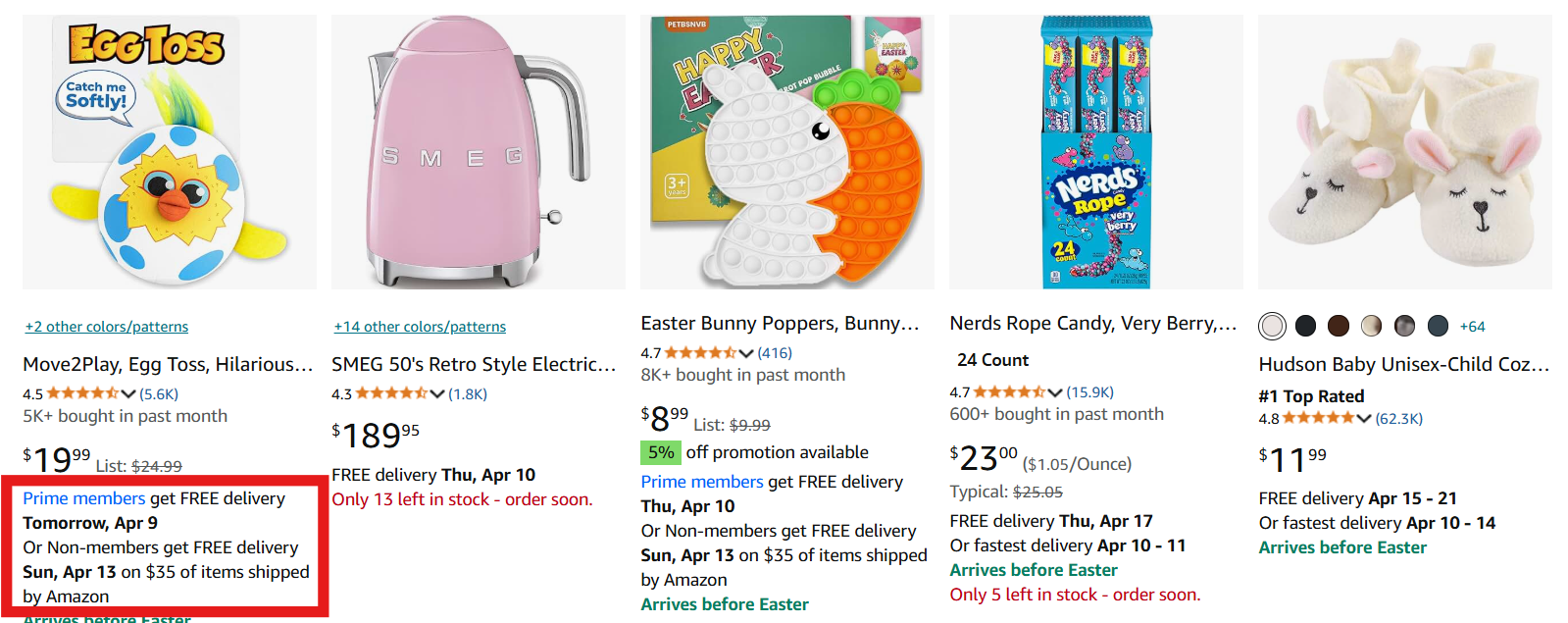
- Slightly lower launch pricing to undercut competitors for a few weeks
Note: Make sure your price is still profitable after fees and VAT.
3. Request Reviews
Even just 3–5 strong early reviews can make a huge difference in clickthrough and conversion rates. Once you get your first few orders, use the “Request a Review” button in Seller Central (available for 5–30 days after delivery).
Wrapping Up
You’ve just walked through the complete, step-by-step process for launching on Amazon Germany — from validating demand to getting compliant, setting up your account, choosing the right fulfillment method, listing your products, and launching with confidence.
You can stop here and grow your sales in Germany. Or when you’re ready, use this same foundation to expand into other European marketplaces and build a multi-country Amazon brand. Either way, you’re ahead of many sellers because you have the right information.
